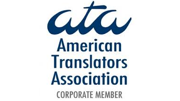Believe it or not Google Translation was born in 2006, and so celebrates its 10th birthday this year. From its original 2 languages the tool can now deal with 103 languages including Hmong (a dialect spoken in China, Vietnam, Laos and Thailand), Shona (a Bantu language native to Zimbabwe) and Telugu (the primary language in the Indian states of Andrha Pradesh and Telangana).
According to the Google blog the aim of the tool launched 10 years ago was to “break language barriers and to make the world more accessible”. Has it achieved this?
Admittedly, I do use Google Translate, for example if someone sends me an email in Dutch then I copy and paste the text into the tool to see what the gist of the text says. By no means do I use it as a professional tool as a translator. As a freelancer and having worked in the translation industry for several years, Google Translate is somewhat of a sticky subject. Many ‘outsiders’ think that you can just put text into Google and what comes out the other side is a perfectly usable piece of text. Wrong! I’ve often seen examples of companies who have clearly tried to save some cash by translating their leaflets, menus etc. by using Google Translate. Oh dear, oh dear!
But, there are definitely two sides to every story and in this blog post and the next I want to put forward both sides of Google Translate. Outside of its use as a professional translation tool, it does have several good sides. Here are just a few…
Helping refugee communities
In light of the on-going struggles in Syria, an estimated 3 million Syrians have fled the country heading for neighbouring countries and further afield. The plight of these refugees and who will take them in is never far from our news feeds. But, perhaps, little thought is given to what happens when they are taken into the safety of a foreign community. How can they and their new neighbours communicate? Google Translate has helped bring down some barriers in these situations and has helped Syrians to integrate into the local community. This has certainly been the case in Canada (a country which has offered to resettle 25,000 refugees).
A helpful travel tool
A feature of the Google Translate App is ‘Word Lens’. Whereby you can instantly see translations of menus, street signs and images by using your mobile device. By ‘scanning’ the image in front of you using your mobile device’s camera the app will provide the translation for what you’re seeing. The feature means that you can ‘see the world in your language’. I’ve yet to try this out, but can see huge potential of this, particularly when you’re in a country where you cannot speak the local language. Currently, this is available in 28 languages. There is also an offline mode which means you don’t have to have an Internet connection (which is often the case when you’re on the road) to use the tool.

The translate app is also a helpful tool when trying to communicate in a stressful situation, perhaps you’re injured and need to go to the hospital in Thailand, or your bag has been stolen and need to provide details to the police in Spanish. According to Google, the Translate app will also help you have a bilingual conversation. You speak, the app interprets your speech into the target language, and then the person you are speaking to does the same.
Google Translation is growing
Since its inception when the tool was used by a handful of people, Google Translate is now used by over 500 million people, with 100 billion words translated daily. Not only is it growing in usage numbers but also in the numbers of people contributing to the ‘database’ of translations. Users can suggest correct translations for specific terms and even correct mistakes. By having these recommendations and corrections from human contributors, the tool can increase in its efficacy and accuracy.
So, there are many good points to the tool and I can definitely recommend its use for many informal situations when you find yourself in a sticky linguistic situation abroad. But, as with any technological application it has its limitations, which we will discuss below.
So far, we looked at how the tool can bring communities and people together, breaking through language barriers. Yes, granted this a handy thing to have at your disposal when travelling to find out what something is on a menu or when you need to figure out the gist of a piece of text. But, I’m not convinced that this should be relied on when conversing directly with other people, and particularly not for written texts. Why? Because you’ll probably end up looking rather foolish…

Fortunately, GT wasn’t a big thing when I was at school, studying languages at university or even when I was doing an MA in Translation. Perhaps nowadays it’s more of a common tool for students. I still remember carting around several dictionaries for use in classes. I’m guessing this is no longer common place with today’s students. They have numerous online dictionaries, applications and GT to play with! However, without sufficient knowledge of either the target or perhaps even the source language, simply entering a chunk of text to be translated and taking the resulting translation as it is without editing can lead to some comedic results. Let’s look at why this is….
Statistical machine translation
The tool is built using a method called ‘statistical machine translation’, whereby large amounts of texts and their equivalent translations are aligned. The translation program creates translations based on parallels found in the ‘bilingual text corpora’ (existing translations created by humans) as well as ‘monolingual corpora’. The program searches for patterns and statistical parameters to help it ‘intelligently guess’ the best translation, all in a matter of seconds. The statistical parameters are usually built on the presumption that, for example, Phrase 1 in the source language = Phrase 1 in the target language (this is a huge over simplification of some very complex linguistic equations), and that this parallel applies in all situations. This is evidently not always true, and a phrase used in one language in one context is unlikely to be exactly the same in a different context.
Lack of grammatical rules
As GT looks for chunks of translated text to match your input, it’s unlikely to find an exact chunk to match the whole of the phrase/paragraph you want to be translated. As such, it sticks together smaller chunks of text it has found in order to provide a translation, and not always in the right order! In finding the translated chunks the GT algorithm does not consider grammatical rules.
GT also struggles with some verb tenses, in particular the perfect and imperfect tenses in Romance languages, as well as the subjunctive.
Limited by the bilingual text corpora
As GT relies on a huge bank of bilingual texts, the amount of text it has at its disposable limits the translations it can provide. For European Union languages this is not really a problem, but for languages such as Tajik and Xhosa for example, for which the text corpora is relatively small, not only will results be limited but accuracy could be questionable also. Moreover, a lot of GT translations go via English (e.g. DE > EN > ES), which introduces more chance for error.
Reliance on human translators
As mentioned in part 1, GT relies not only on human translations for the basis of its algorithms, but also on user contributions in terms of corrections, recommendations and translations of technical terms, for example to build it’s database and improve on translations. So, despite the fact that GT has come along leaps and bounds in the world of automated translation and in creating the an idealised ‘sci-fi style’ universal translator it still relies on human interaction, contribution and language knowledge in order for it to function and to provide somewhat meaningful translations.
The verdict? Google Translate; use with caution!
About the Author
Alison Tunley
Alison is a seasoned freelance translator with over 15 years of experience, specialising in translating from German to English. Originally from Wales, she has been a Londoner for some time, and she holds a PhD in Phonetics and an MPhil in Linguistics from the University of Cambridge, where she also completed her First Class BA degree in German and Spanish… Read Full Bio
Resources
http://questvisual.com
https://googleblog.blogspot.co.uk/2016/04/ten-years-of-google-translate.html
https://en.wikipedia.org/wiki/Google_Translate
http://michaelnielsen.org/blog/introduction-to-statistical-machine-translation/
https://www.quora.com/What-grammatical-challenges-prevent-Google-Translate-from-being-more-effective











